Dance off on the dance marathons of the 1920s and 30s years
Categories: History
By Pictolic https://pictolic.com/article/dance-off-on-the-dance-marathons-of-the-1920s-and-30s-years.htmlDuring the great depression in the United States was a crazy fad called "dance marathons". They lasted for hours, weeks, even months. It was a strange sight — a haggard, barely moving the people who slept, ate and, perhaps, not defecated on the go.
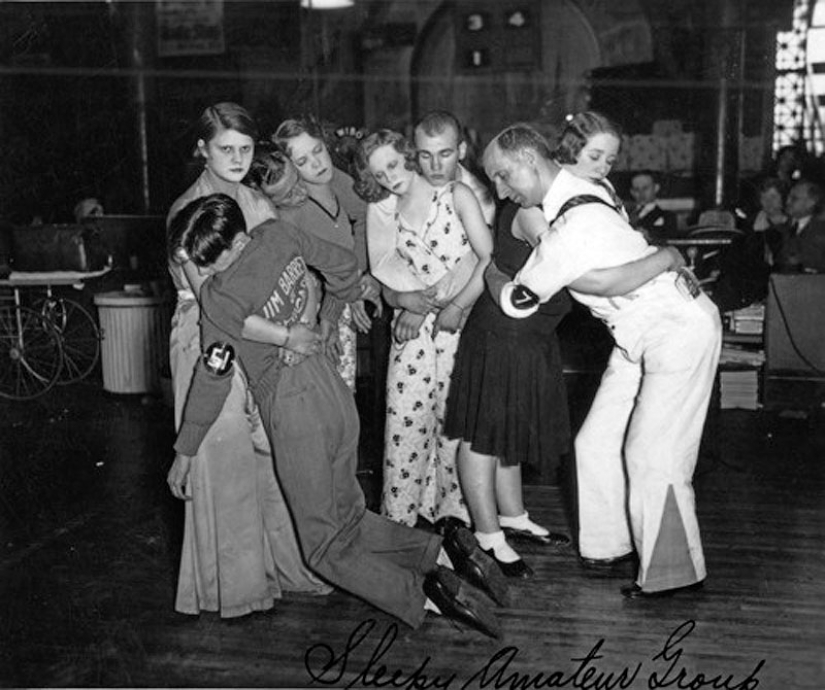
Stock market crash 1929 caused Great Depression was the largest economic disaster in the industrial world. By 1931, the shares were worth only 20% of the nominal value of 1929, industrial production fell by half, one in four was unemployed. By 1935 half of American banks and companies were ruined. Even the Ford Motor Company, the largest employer in the country, have closed their offices.
Millions wandered the country looking for any work, scavenging and stealing. "Northern Pacific Railway" estimated the number thrown out of the wagons vagrants in 683 thousand people per year! In this era of broken dreams and empty pockets and blossomed one of the most appalling forms of entertainment — dance marathons became for some a way to escape from their suffering, watching other people, but for others — a means of livelihood.
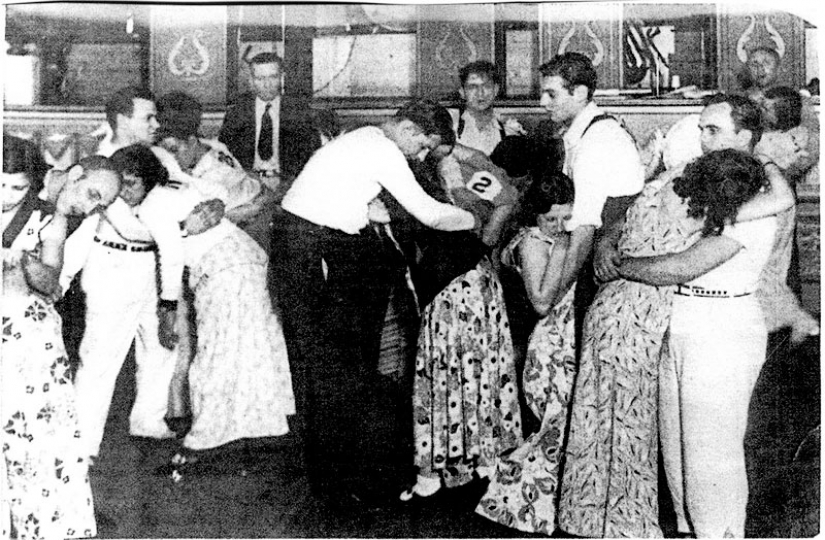
Dance marathons, "night club of the poor" as they were called, emerged in the early 1920-ies as an innocent hobby, along with contests for the largest number of pies eaten. The first official dance marathon can be considered "Audubon Ballroom Marathon" that began March 30, 1923 in new York. There was installed and the first record of Alma Cummings danced 27 hours.
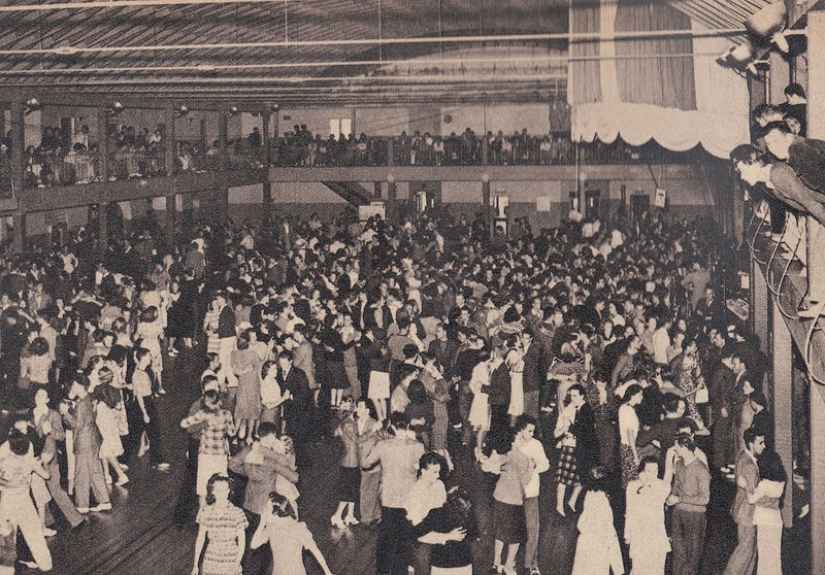
To the beginning 1930-x years, dance marathons have become a very profitable business. There is something strangely fascinating and attractive to the people watching on the verge on of this love to the painful agony and played the organizers. Around marathons were fed a lot of people — doctors and nurses, waiters, musicians, bouncers.
A shuttled across the country from one marathon to another, thus ensuring its existence. Some also participated in the marathon in the hope that "hunters for talents" will notice them and offer a contract. But lucky few — for example, June Howick, has attracted the attention of Hollywood agent on "the West Palm Beach Marathon" in 1934, where she danced for 3,600 hours almost non-stop
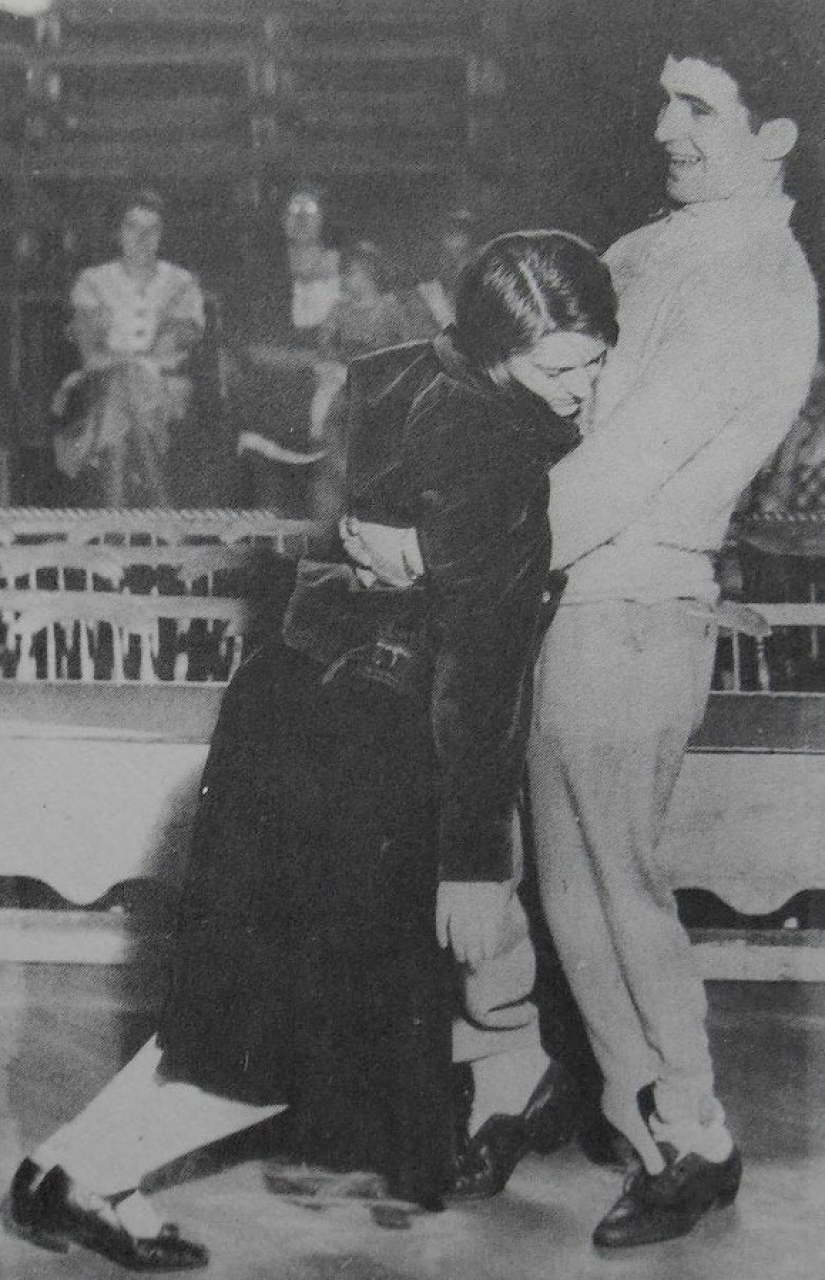
A special role in dance marathons belonged to the steward (Master of Ceremony, MC). His main task was to entertain the audience, coming up with new tasks for the contestants. The most common variant was the so-called "Derby" when, after several hundred hours of dancing, participants, already on the verge of physical and emotional exhaustion, was to run along the tracks painted on the floor.
Was also common, in which every two hours is included. any particular tune, and were all supposed to dance in this style — otherwise they would weed out. A good steward had to have nerves of steel and a certain amount of butchery — this title has produced as fine actors, for example, red Skelton, and very odious characters like Lord Buckley.
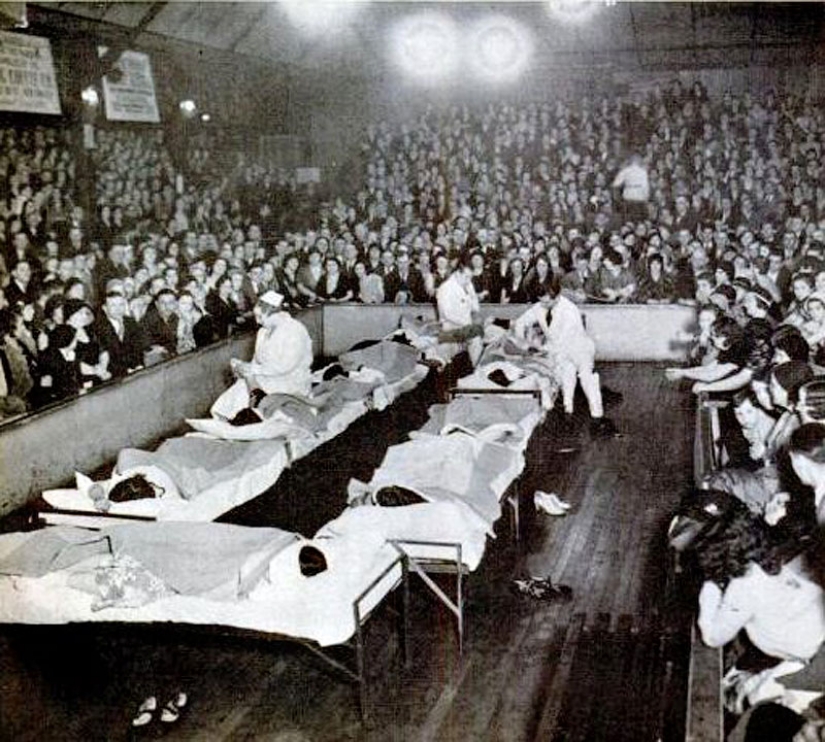
Often, the organizers hired a fake pair that were supposed to start a fight on the dance floor — additional (and often expected) entertainment for the public. Many Americans went to the marathon to watch a catfight. Additionally, participants could request to sing a song to order the public (of course, not continuing to dance).
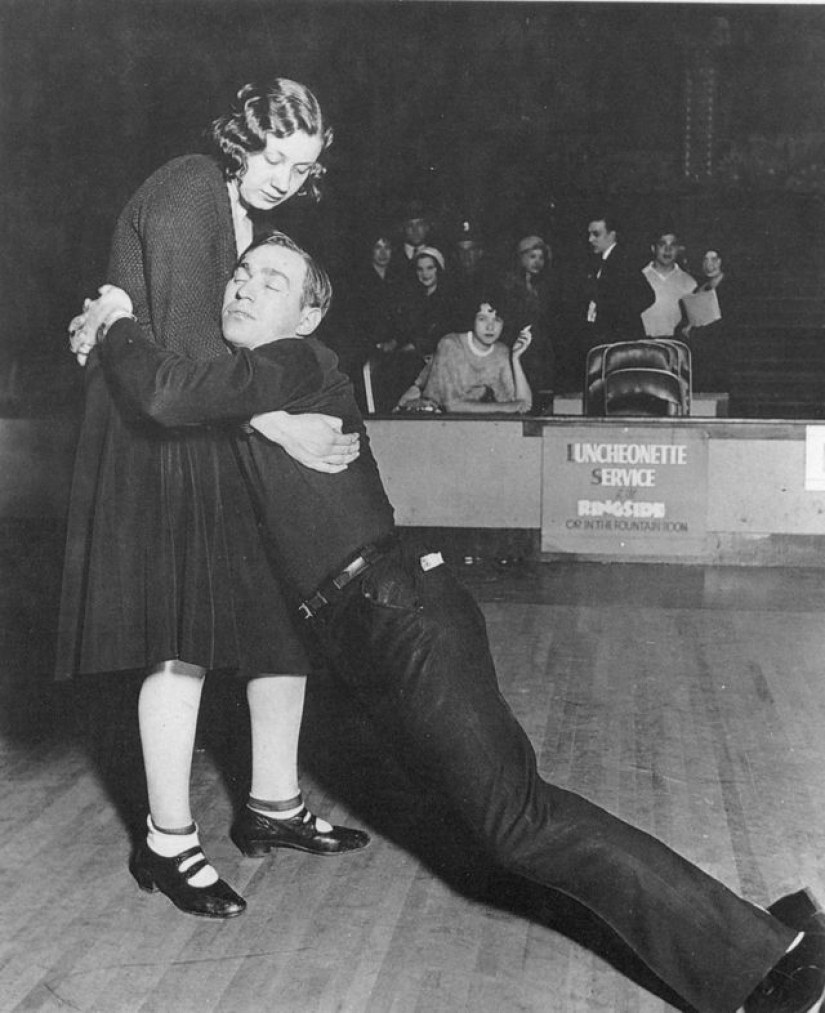
Several participants of the marathon actually died on the dance floor, but that didn't stop neither the participants nor the spectators. Often the dancers began to hallucinate, which also entertained the audience — what could be more fun than watching people chase around on the floor for imaginary dogs?! An even greater number of dancers dead after marathons, long lack of sleep was taking its toll and people fell into a coma, and since they were too poor to have someone care, they are just out of this coma did not come out.
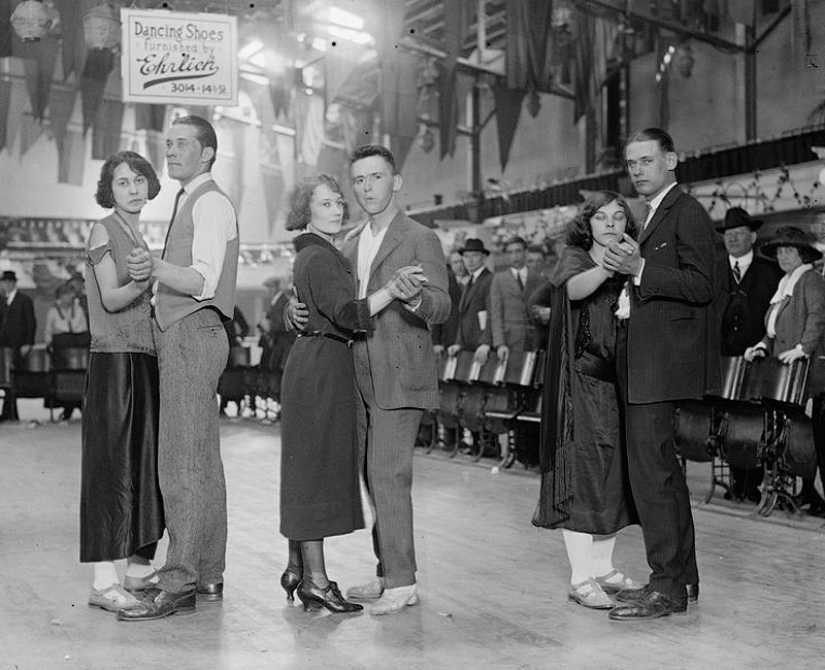
By the end of the 1930s, dance marathons became a really bloody business, and has been banned in most States. But in spite of all prohibitions, they continued to hold until the US entry into World War II.
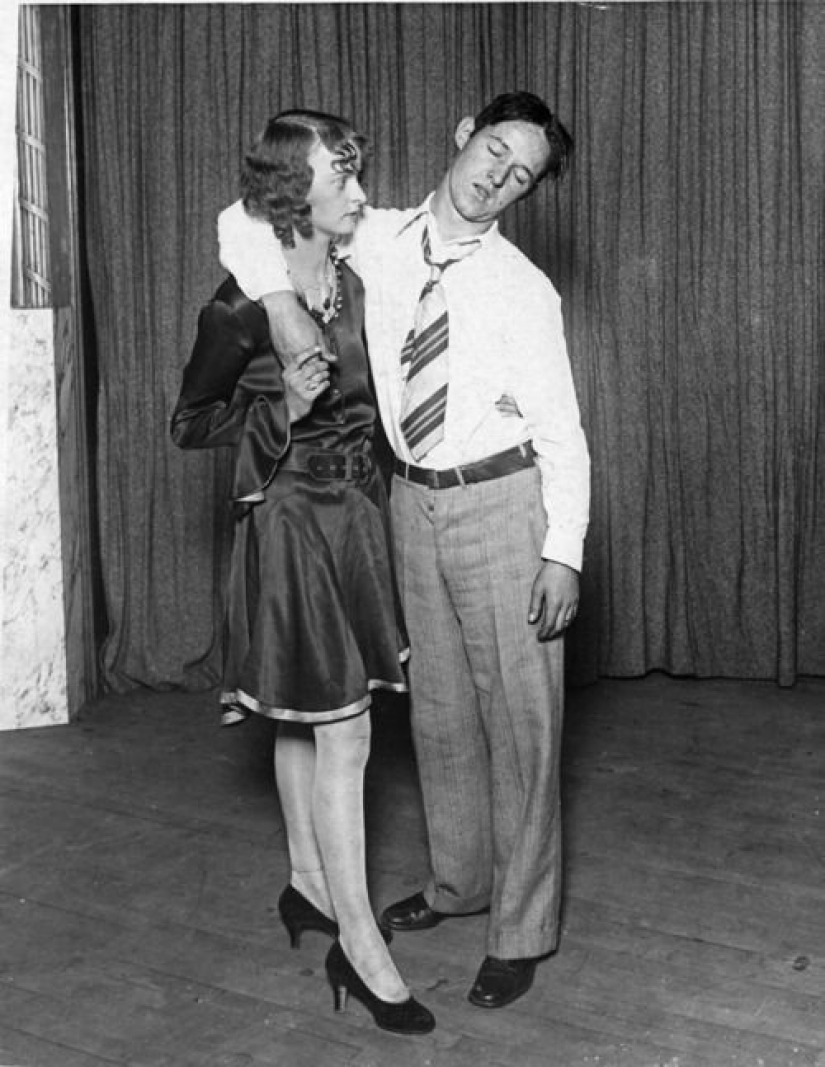
At the moment the only film showing the horror and barbarism of the dance marathons (and indeed the only film on this subject) is still "They Shoot Horses, Don't They?" ("They shoot horses") Sydney Pollack, filmed in 1969. It is highly recommended for viewing, although this softened version is much more rigid books of Horace McCoy, written in 1935.
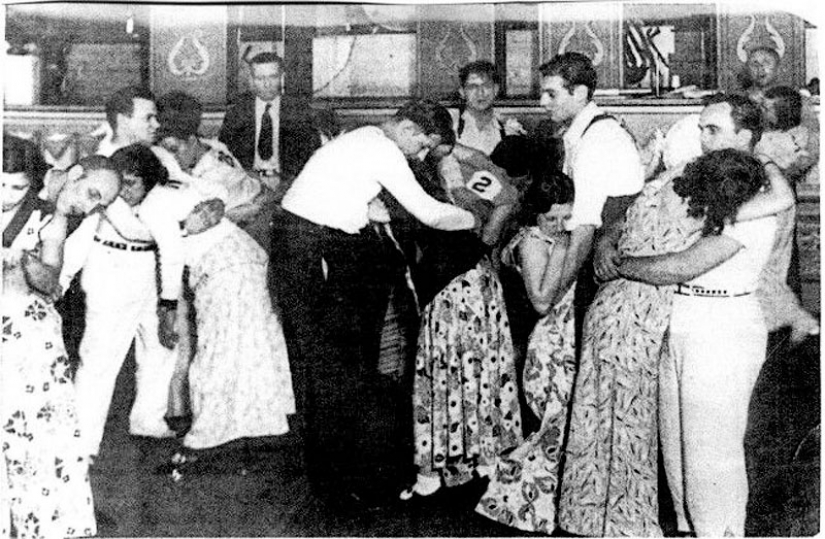
There are now attempts to revive the dance marathons — in limited time frame (maximum day) and with noble goals (such as dance marathon, held in February 2002 at the University of Idaho in favor of the "red cross"). Only creeps in here's a thought: dance marathons of the 1920s also lasted only for two days...
Keywords: 30th | Poverty | USA | Dancers | Dancing
Post News ArticleRecent articles

See what uninhibited ladies looked like at the height of the American baby boom. In those days, there was no trace of silicone, and ...

We offer you a selection of interesting facts from a variety of fields of knowledge. How does our body react to sneezing? Where did ...
Related articles

Horror is a genre of cinema that has become a springboard into the big cinema of many venerable Hollywood actors. Laurence ...

The symbol of the island of Sicily — treskilion, represents three joined legs bent at the knees, with the head of the Gorgon ...
The name of the photographer is not known to everyone, but it is difficult to find a person who is not familiar with his works. ...

Imagine a forest where hundreds of pine trees seem to bow to an invisible force and remain frozen in this strange obeisance ...